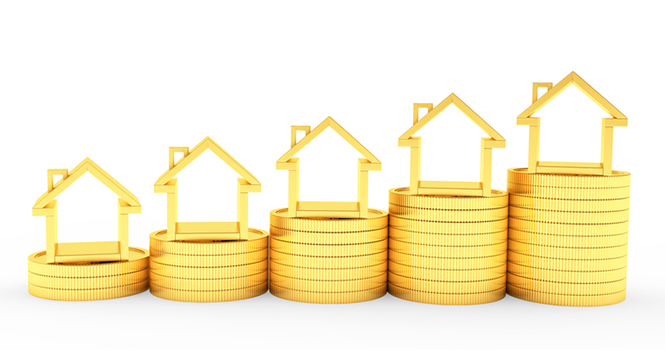Home price growth continues to mount, though at a slower pace, up 5.5 percent year-over-year in April, down from a 5.6 percent gain in March, according to the latest S&P CoreLogic Case-Shiller Indices.
The S&P CoreLogic Case-Shiller U.S. National Home Price NSA Index’s 10-City Composite rose 4.9 percent year-over-year, down from a 5.2 percent gain in March, while its 20-City Composite rose 5.7 percent, down from a 5.9 percent gain in March. Month-over-month, the 10-City Composite rose 0.8 percent and the 20-City Composite rose 0.9 percent.
Of the 20 cities analyzed for the Index, Dallas, Texas, Portland, Ore., and Seattle, Wash., again topped the charts, with prices up 8.4 percent in Dallas, 9.3 percent in Portland and 12.9 percent in Seattle.
Is growth beginning to grind to a halt? Home prices could hit a ceiling, according to S&P Dow Jones Indices Committee Chairman and Managing Director David M. Blitzer, but not give way to collapse.
“As home prices continue rising faster than inflation, two questions are being asked: Why, and, could this be a bubble?” said Blitzer in a statement. “Since demand is exceeding supply and financing is available, there is nothing right now to keep prices from going up. The increase in real, or inflation-adjusted, home prices in the last three years shows that demand is rising. At the same time, the supply of homes for sale has barely kept pace with demand and the inventory of new or existing homes for sale shrunk down to only a four-month supply. Adding to price pressures, mortgage rates remain close to 4 percent and affordability is not a significant issue.
“The question is not if home prices can climb without any limit; they can’t,” Blitzer said. “Rather, will home price gains gently slow or will they crash and take the economy down with them? For the moment, conditions appear favorable for avoiding a crash. Housing starts are trending higher and rising prices may encourage some homeowners to sell. Moreover, mortgage default rates are low and household debt levels are manageable. Total mortgage debt outstanding is $14.4 trillion, about $400 billion below the record set in 2008. Any increase in mortgage interest rates would dampen demand. Household finances should be able to weather a fairly large price drop.”
“We expect home price indices to continue to reflect rising prices year-over-year as inventory of existing homes at entry level prices remain constrained in major markets,” says Ruben Gonzalez, economist at Keller Williams. “New construction has only recently begun to bring entry-level products into many markets and we expect it will take some time for this to have noticeable impact on market conditions. Price gains are only likely to be subdued if we see a deterioration of demand as a result rising interest rates at some point this year.”
“Two conditions in today’s market that can quickly change the home price trend are swings in the labor market or home inventory,” says Bill Banfield, executive vice president at Quicken Loans. “Both of these factors have remained largely constant throughout the year, and we’re seeing this reflected in most metro areas of the housing market.”
Source: S&P Dow Jones Indices
For the latest real estate news and trends, bookmark RISMedia.com.











